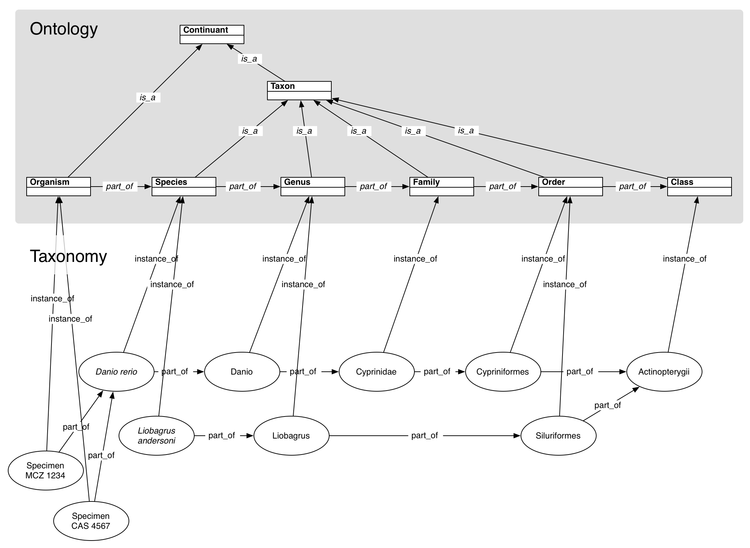Difference between revisions of "Taxonomic Rank Ontology"
From phenoscape
(→Problems) |
|||
| Line 5: | Line 5: | ||
Previous attempts to represent taxonomy using ontology usually include taxonomic groups as classes in the ontology. Individual organisms are seen as instances of those universal classes. There could be an ontology term Mammal, such that Primates and Rodents are more particular types of Mammals (''is_a'' descendants). Taxonomies are even often used as examples to help explain ontology inheritance to new users. This scheme fails to represent reality in several ways and is even misleading. | Previous attempts to represent taxonomy using ontology usually include taxonomic groups as classes in the ontology. Individual organisms are seen as instances of those universal classes. There could be an ontology term Mammal, such that Primates and Rodents are more particular types of Mammals (''is_a'' descendants). Taxonomies are even often used as examples to help explain ontology inheritance to new users. This scheme fails to represent reality in several ways and is even misleading. | ||
| − | ===Problems=== | + | ===Problems with the "traditional" view=== |
===Advantages=== | ===Advantages=== | ||
Revision as of 16:33, 28 April 2008
A taxonomic rank ontology allows particular taxa to be treated as historical individuals instead of as universal types.

Taxonomic rank ontology and sample instance data. The ontology terms are surrounded by a grey background. The "Continuant" term would reside in an upper ontology such as BFO. The instance data constitute a particular taxonomy.
Previous attempts to represent taxonomy using ontology usually include taxonomic groups as classes in the ontology. Individual organisms are seen as instances of those universal classes. There could be an ontology term Mammal, such that Primates and Rodents are more particular types of Mammals (is_a descendants). Taxonomies are even often used as examples to help explain ontology inheritance to new users. This scheme fails to represent reality in several ways and is even misleading.
Problems with the "traditional" view
Advantages
- Taxa are modeled as individuals.